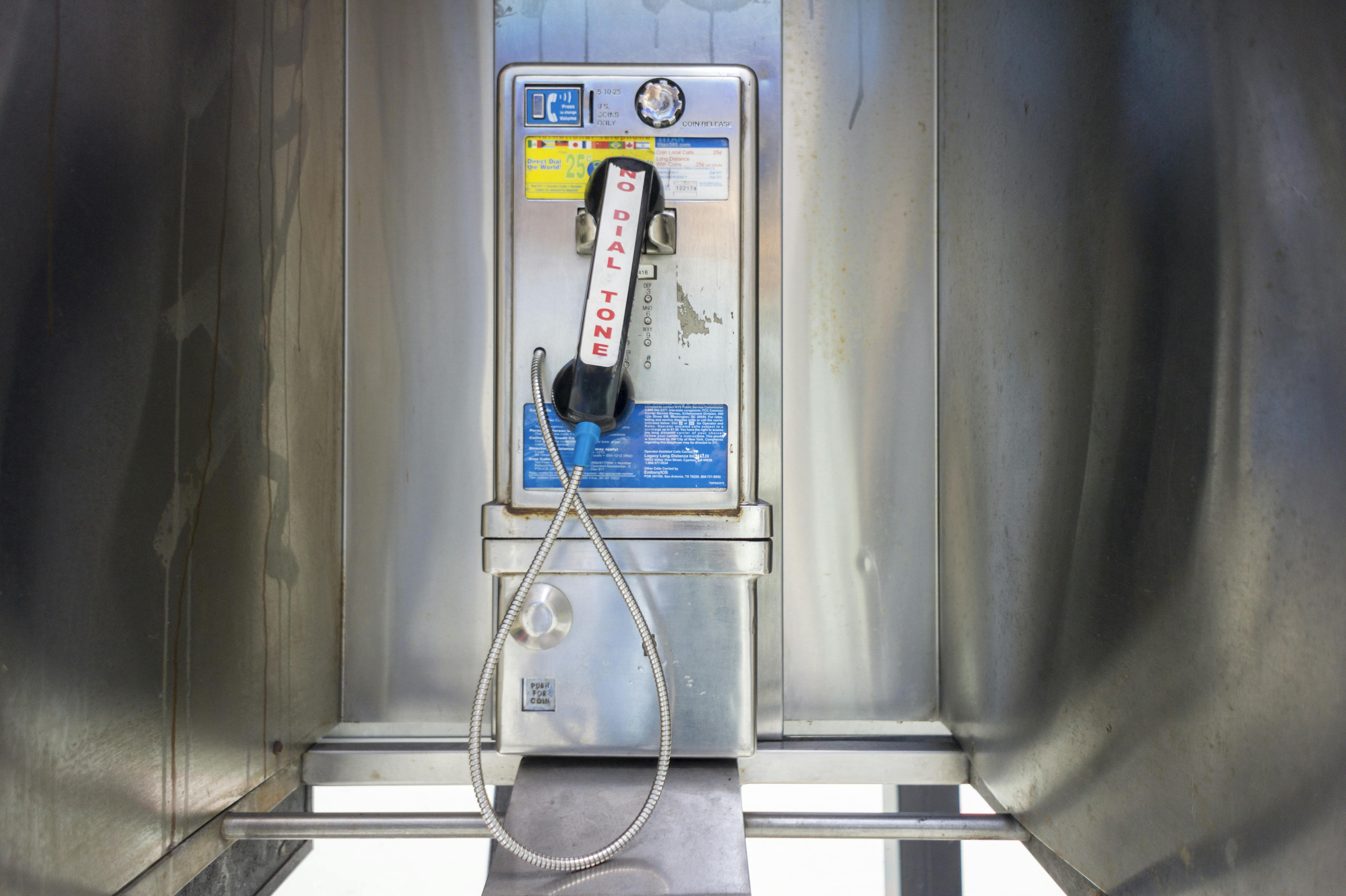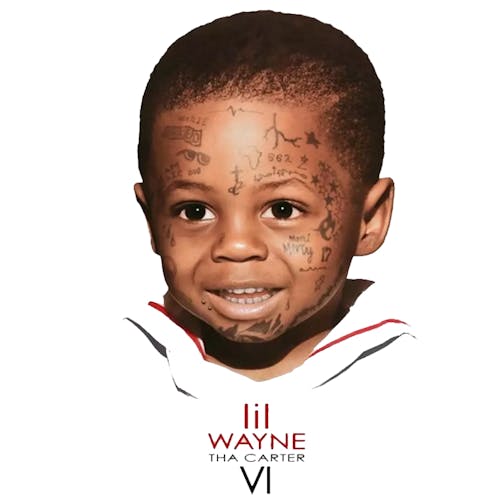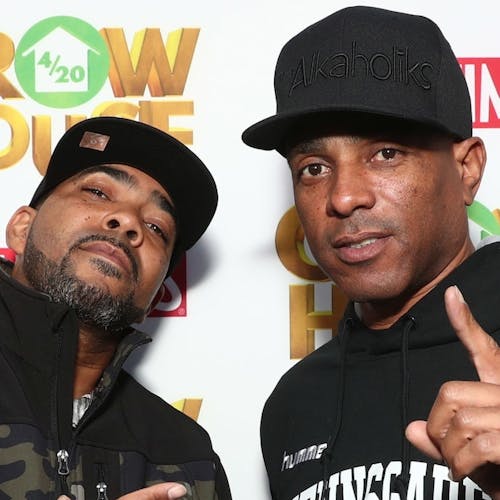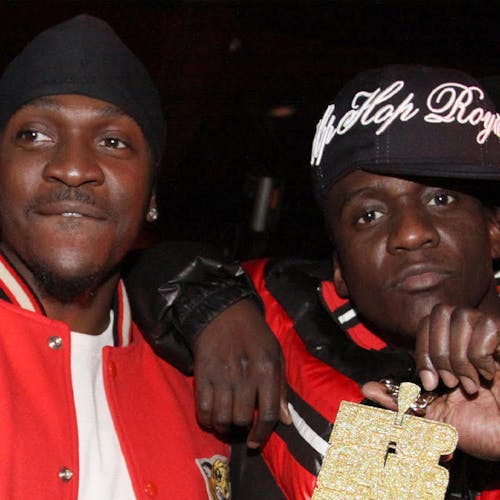
"Hot summer night after balling hard, I went to the phone booth with my calling card" - Big L on "I Shoulda Used a Rubba"
Editor's note: In the wake of the widespread AT&T cell phone outages, we recall a time when the pay phone was the preferred method of communication.
In the seventh episode of the third season of The Wire, the character Bernard, is purchasing burner phones for the Barksdale organization. Having been instructed by Stringer Bell (Idris Elba) to only buy two phones from a single outlet, he ultimately disobeys the order when it proves to be too time consuming for his girlfriend, Squeak.
While this spoke to the nature of drug-dealing during a time when cell phone usage was quite prominent, it neglects the role that pay phones played in drug culture, too.


Whereas cell phones are now ubiquitous in all of culture, we've seen almost the complete eradication of pay phones throughout the country.
In 2022, New York City — the vast metropolis built upon connectivity with thy neighbor — removed the last remaining pay phone from 745 7th Avenue, and placed it inside the Museum of the City of New York where the newly installed exhibit Analog City looked back at life in the city before computers.
"As a native New Yorker, saying goodbye to the last street payphone is bittersweet because of the prominent place they've held in the city's physical landscape for decades," said Matthew Fraser, Commissioner of the Office of Technology and Innovation.
In 1989, pay phones, the favored way for Americans on the go to reach out and touch someone, celebrated their 100th birthday — growing from a lone outpost in a Connecticut bank — to a $3.5-billion-a-year market.
While this sector was seemingly booming, law enforcement viewed the pay phone kiosk as the place where billions of dollars of drug transactions took place each year. Despite this understanding, police were left with very few options.
Precedent
In 1967, the Supreme Court heard Katz v. United States. The plantiff, Charles Katz, argued that the FBI had illegally wire tapped a Los Angeles phone booth where he regularly placed illegal bets throughout the country.
Upon his arrest, Katz argued that this was an invasion of his privacy. The justices ruled 7-1 in his favor, declaring that the Fourth Amendment protects “people, not places," and that someone conducting business in a phone booth should have a “... reasonable expectation of privacy.”
Armed with that ruling, law enforcement attempted to curb the usefulness of the phone booth. In 1987, New York City eliminated the option to receive incoming calls — presumably from someone either buying, or coordinating, a buy. Additionally, push button dialing was replaced with rotary dials in booths that were deemed particularly high-risk because they resided in high-crime areas.
The importance of the pay phone during illicit actives certainly wasn't reserved to New York City.
In 1989, US. Park Police Sgt. Pat Moyer, an authority on D.C. cocaine markets, said the pay phone had become an indispensable tool of dealers trying to throw police off their trail.
"They didn't want us tracking their business calls to their residences, so they took over the pay phones," he said. "The standard operation is for someone wanting to buy dope to show their money to a runner, who then calls the dealer on another pay phone. The runner stands by and waits for the return call to hand over the dope to the buyer."
Naiomi Kooritzy, vice president of Tel & Tel Payphone Inc., said the measures to curb the flow of drugs on pay phones in Washington DC cost her company between 20-30 percent of her profits.
Telephone Arcades
Drug dealers weren't deterred. In major cities, they turned to "telephone arcades" which primarily serviced immigrants who either didn't have a landline, or because they preferred the price at an arcade to that of a regular, monthly phone bill.
A conservative estimate of the loosely-regulated industry placed the size of the telephone arcade industry at $300 million in annual revenue in 1996 — growing at a 10 percent yearly rate.
While this number paled in comparison to the overall $70 billion a year long distance industry, communications giant, AT&T still set up its own telephone arcades in New York, Los Angeles, and San Francisco.
A DEA agent who monitored the Colombian-controlled drug trade in the Jackson Heights section of Queens, NY, said the phone arcades, like telephone cards, had hindered crime fighters.
Removal
Whether major corporations were complicit or not, the coordination of where pay phones were placed often coincided with high-risk drug areas. Meaning, phone booths were probably put in neighborhoods where there would be a high-volume of calls. And, presumably because drug dealing was/is done in a low income area, companies would see higher profits.
In July 1992, Chicago passed an ordinance that would allow the city some semblance of control over where pay phones could be placed.
Then mayor, Richard M. Daley, was standing at 63rd Street and Martin Luther King Drive and within 1,000 feet of him were 16 outside pay phones, John Holder, spokesman for the city's Department of Revenue, told the Chicago Tribune.
According to law, no outside pay phone could go up without the city's approval. If it was to be outside, but on private property, then the company had to apply for a zoning variance. The decision ultimately laid with the local Alderman in that district who decided if the phone met the community's approval.
Many of the companies intentionally disobeyed. Illegal pay phones made roughly $300-$500 a month, and were rarely spotted or reported, because there was no dedicated squad assigned to finding them.
Ineffective measures like installing better lighting at the booths and adjusting the phones so that beeper numbers couldn't be punched in did little to curb the illicit actives. Thus, a prohibition-esque approach became the preferred tactic when combatting drug dealing on pay phones.
Across the country, major cities identified "nuisance pay phones," and eliminated them. In turn, law-abiding, low income residents were left without a means of communication. And, in the absence of competition from major providers, smaller companies simply set up shop.
"It's the old story. You put a 12-foot wall around the country to prevent drugs from coming in and the dealers will get a 13-foot ladder, said the DEA's John Dowd, to the New York Daily News.
By 2007, pay phones were a declining business. There were 22,967 New York City, down from about 35,000 12 years before. The last rotary pay phone in New York City — at D'Agostino supermarket in Murray Hill — was being replaced with a push-button version. In December, AT&T announced they would end their pay phone business completely by 2008. A competitor, Bell South, had ended their business seven years prior.
It seems rather appropriate that the aforementioned episode of The Wire aired in 2004. Drug dealers had moved out of the booths — in favor of personal cell phones — or burners. Eight years earlier, the phone companies believed that pre-paid cell phones could bloom into a $1 billion a year business.
A 1999 study of the Yankee Group predicted that pre-paid wireless phone service would grow from 3.5 percent of all wireless subscribers in 1998 to 22 percent by 2003.
In 2015, The Wire creator, David Simon, reveled that law enforcement asked him not to reveal certain police vulnerabilities in their plot lines. Specifically, how the writers had once intended to show that criminals used the walkie-talkie-esque, "push-to-talk" feature of Nextel phones, and how could avoid surveillance and wiretaps.
According to Simon, the technology "was actually impervious to any interception by law enforcement during a critical window of time."
The following year, California Congresswoman Jackie Speier proposed a bill that would force customers to hand over personal information in order to buy a pre-paid phone. Under her bill, the purchase of any pre-paid mobile device or SIM card would come with an "identification requirement" that forces buyers to hand over their full names, dates of birth and home addresses.
This bill would close one of the most significant gaps in our ability to track and prevent acts of terror, drug trafficking and modern-day slavery," Speier said in a statement.
The pay phone is certainly a relic of yesteryear. However, AT&T's massive network outage reveals that society can be quite lost without the ability to communicate. Were pay phones killed in favor of a better technology, or, perhaps, because the War on Drugs demanded a dead phone line?



